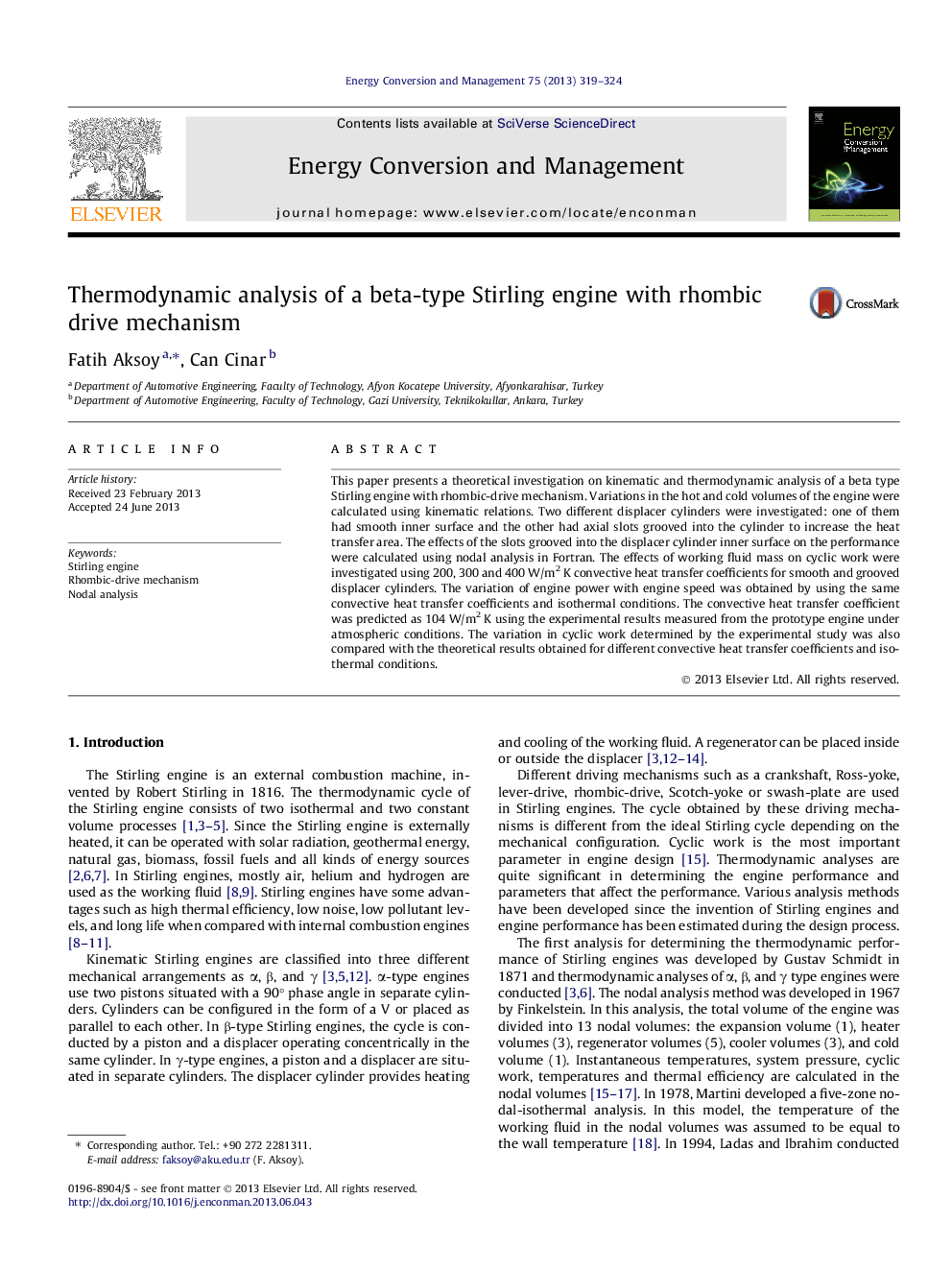| Article ID | Journal | Published Year | Pages | File Type |
|---|---|---|---|---|
| 7166291 | Energy Conversion and Management | 2013 | 6 Pages |
Abstract
This paper presents a theoretical investigation on kinematic and thermodynamic analysis of a beta type Stirling engine with rhombic-drive mechanism. Variations in the hot and cold volumes of the engine were calculated using kinematic relations. Two different displacer cylinders were investigated: one of them had smooth inner surface and the other had axial slots grooved into the cylinder to increase the heat transfer area. The effects of the slots grooved into the displacer cylinder inner surface on the performance were calculated using nodal analysis in Fortran. The effects of working fluid mass on cyclic work were investigated using 200, 300 and 400Â W/m2Â K convective heat transfer coefficients for smooth and grooved displacer cylinders. The variation of engine power with engine speed was obtained by using the same convective heat transfer coefficients and isothermal conditions. The convective heat transfer coefficient was predicted as 104Â W/m2Â K using the experimental results measured from the prototype engine under atmospheric conditions. The variation in cyclic work determined by the experimental study was also compared with the theoretical results obtained for different convective heat transfer coefficients and isothermal conditions.
Keywords
Related Topics
Physical Sciences and Engineering
Energy
Energy (General)
Authors
Fatih Aksoy, Can Cinar,
